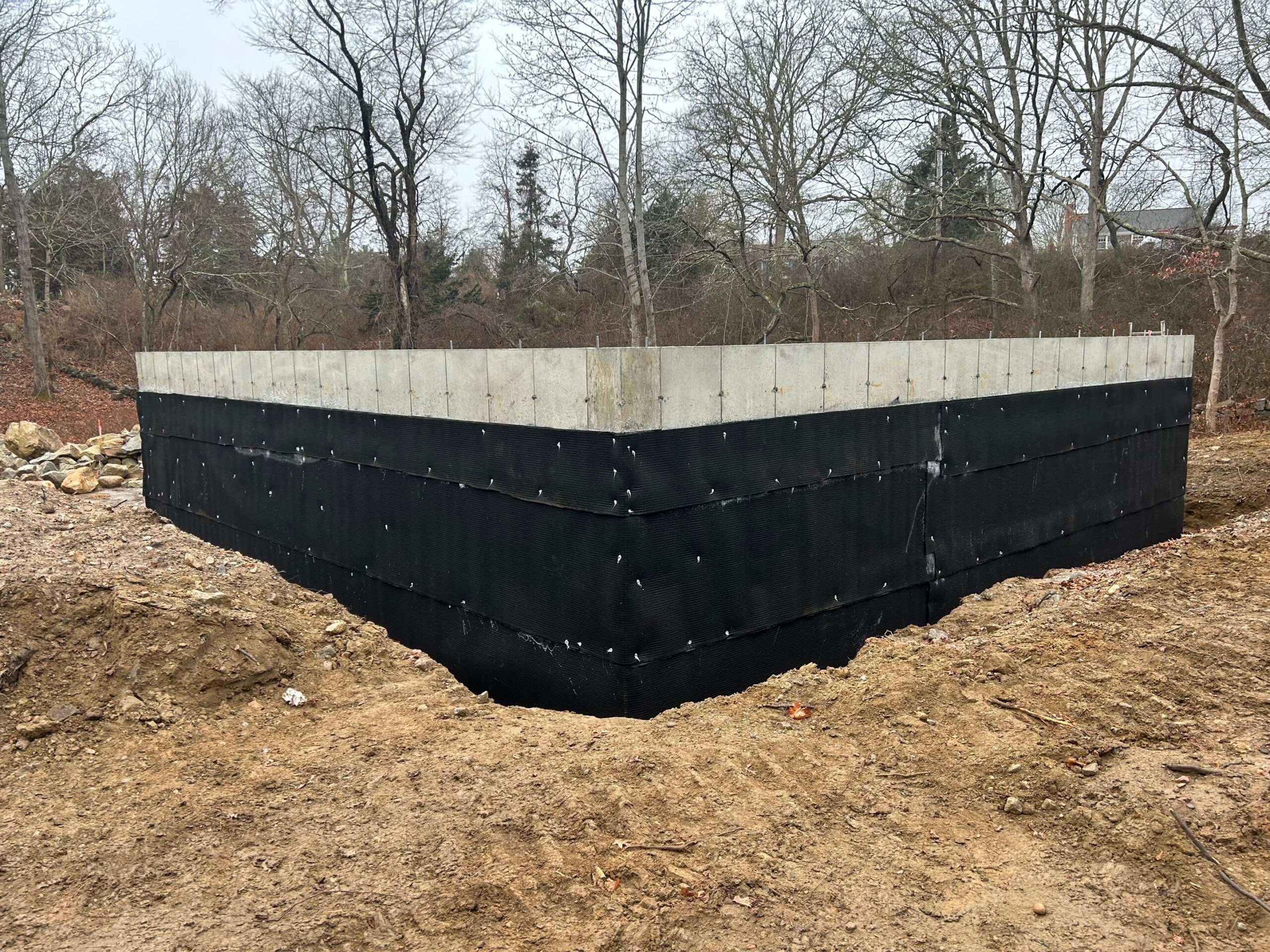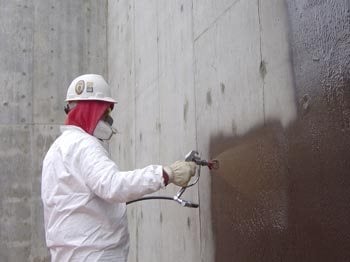Exploring the Numerous Strategies and Solutions for Effective Damp Proofing
Moisture in structures presents considerable challenges to both architectural honesty and interior air top quality. Various methods and services have actually emerged to battle this prevalent concern. From conventional damp-proof membranes to innovative chemical therapies, each technique uses special advantages. Understanding these choices is essential for effective wetness control. Selecting the right solution depends on details structure conditions and needs, prompting more expedition right into the most effective wet proofing techniques readily available.
Understanding the Reasons of Wetness
Although dampness can develop from numerous resources, recognizing these causes is vital for efficient removal. Commonly, dampness originates from 3 main resources: rising moist, passing through damp, and condensation. Increasing moist takes place when groundwater takes a trip up through porous materials, such as brick or stone, frequently due to an absence of an efficient obstacle (damp proofing newcastle). Passing through wet is commonly triggered by external factors, consisting of roof leakages, damaged gutters, or harmed wall surfaces, enabling water to penetrate a property. Condensation, on the other hand, results from excess dampness airborne, typically aggravated by inadequate ventilation and temperature differences, bring about water beads creating on surfaces. Identifying these underlying concerns is necessary, as each kind of dampness calls for a tailored method for removal. Correct evaluation assists in determining one of the most efficient solutions, inevitably protecting the structural stability of a building and enhancing indoor air quality
Conventional Damp-Proof Membranes

Chemical Damp-Proofing Solutions
Chemical damp-proofing services use an innovative strategy to stop moisture invasion in structures. These methods normally entail the application of liquid chemicals that permeate masonry and create a barrier against climbing moist. Commonly utilized chemicals consist of silanes, siloxanes, and other water-repellent agents that respond with surface area materials to create a hydrophobic layer.The application procedure usually requires drilling openings into the walls, infusing the chemical remedy, and enabling it to treat. This method is specifically useful for older structures where conventional damp-proof membranes might be unwise. Additionally, chemical damp-proofing can be less disruptive and extra cost-efficient than substantial restoration projects.While efficient, these solutions rely on appropriate application and environmental problems for peak performance. Normal maintenance and surveillance are important to assure the long life of the damp-proofing treatment. On the whole, chemical damp-proofing represents a functional option for protecting structures versus moisture-related damage
Dental Caries Wall Building Strategies
Cavity wall surface building and construction strategies supply countless advantages, particularly in wetness control and energy performance. By integrating an air gap between two layers of masonry, these wall surfaces effectively alleviate water access while improving insulation. This mix not only protects frameworks from wetness yet also contributes to lowered power usage.
Benefits of Dental Caries Walls
When thinking about reliable wet proofing techniques, the advantages of tooth cavity wall surfaces attract attention plainly. Dental caries wall surfaces consist of 2 separate layers, producing an air void that efficiently decreases moisture infiltration. This design decreases the threat of wetness, as the outer wall functions as a barrier against rain and water ingress. In addition, tooth cavity walls boost thermal insulation, which contributes to energy effectiveness by reducing warmth loss. They likewise supply audio insulation, helping to develop a quieter indoor environment. Additionally, the air void permits ventilation, which aids in wetness control and reduces the possibility of mold and mildew growth. These advantages not just improve the overall comfort of a building yet also add to its long life and architectural stability.
Dampness Control Approaches
Reliable moisture control approaches are crucial in cavity wall surface building and construction to assure long-term protection against moisture. One main technique entails the unification of weep holes, which help with water drain from the dental caries, avoiding accumulation. In addition, the usage of breathable membrane layers can aid manage wetness degrees while enabling entraped vapor to leave. Correct placement of insulation is additionally vital, as it ought to not obstruct drainage courses. Moreover, making certain that the external leaves of the tooth cavity wall surface are built with waterproof products enhances overall toughness. Routine maintenance checks are vital to determine any type of blockages or damage early, guarding the structure's integrity. Ultimately, a mix of these strategies creates a durable defense against wetness invasion in cavity walls.
Insulation and Energy Performance
Insulation plays a vital role in enhancing power effectiveness within dental caries wall building. By incorporating protecting products, these walls develop a thermal barrier that minimizes heat loss and decreases energy consumption. Reliable insulation not just assists keep a secure interior temperature yet also mitigates the threat of moisture, as it avoids condensation within the wall cavity. Different techniques, such as making use of inflexible foam boards or mineral wool, can be utilized to attain suitable insulation performance. Furthermore, proper installment is necessary to guarantee that voids and gaps are minimized, which can or else compromise energy performance. Inevitably, a well-insulated cavity wall surface contributes substantially to general sustainability and decreases heating and cooling expenses for homeowners.
Exterior Damp Proofing Techniques
External wet proofing methods are essential for safeguarding structures from moisture seepage. Two efficient methods include the application of waterproof membrane layers and the installation of French drains. These options help reduce water buildup and maintain the stability of structures.
Waterproof Membrane Layer Application
While numerous techniques exist for stopping wetness access, the application of water-proof membranes remains an extremely efficient outside damp proofing technique. These membranes are generally made from materials such as polyethylene, rubber, or changed bitumen, supplying a durable barrier against water infiltration. The setup procedure entails applying the membrane layer to the exterior surface areas of walls or foundations, making sure full insurance coverage to stop leakages. Appropriate adhesion and securing at joints are essential to making the most of effectiveness. Water-proof membranes can be applied in various forms, consisting of liquid coverings and sheet membrane layers, enabling for versatility based more info upon the particular demands of the structure. This approach not only shields buildings from wetness however additionally enhances their long life and structural honesty.
French Drain Setup
One reliable technique for taking care of groundwater and avoiding moisture accumulation around a building's structure is the setup of a French drainpipe. This drain system is composed of a trench filled with gravel and a perforated pipe that reroutes surface water far from the foundation. Appropriate installation requires careful planning, guaranteeing that the drainpipe slopes away from the structure to facilitate perfect water circulation. In addition, the location of the drainpipe is crucial; it ought to be positioned in areas susceptible to pooling or excess wetness. Regular maintenance, including clearing debris from the crushed rock and ensuring the pipe continues to be unblocked, is vital for lasting efficiency. Eventually, a well-installed French drain can substantially decrease the threat of water-related concerns in foundations and cellars.
Interior Waterproofing Techniques
Interior waterproofing strategies are vital for protecting a structure's interior from moisture infiltration and possible water damage. These techniques normally include the application of customized materials and techniques designed to develop a wetness obstacle within the framework. One usual approach is using water resistant coatings or sealants on walls and floors, which stop wetness from permeating surfaces.Additionally, mounting interior water drainage systems, such as sump pumps, can successfully take care of water buildup in cellars and crawl spaces. Another method includes using vapor obstacles, which are mounted to inhibit dampness activity from the ground into living spaces.Moreover, addressing any kind of splits or voids in walls or structures with proper sealers guarantees an extensive protection versus water intrusion. By implementing these interior waterproofing approaches, residential property owners can considerably minimize the threat of mold and mildew growth, architectural damages, and other moisture-related issues. Correct implementation of these techniques is necessary for long-lasting protection and structure stability.
Normal Upkeep and Assessment Practices
Routine upkeep and examination practices are essential for ensuring the long-lasting effectiveness of wet proofing services in any kind of structure. Routine checks allow homeowner to determine very early indicators of moisture breach, such as peeling off paint, mold growth, and mildewy smells. These signs can indicate underlying problems that require prompt attention.Inspections should be performed a minimum of each year, concentrating on prone areas like basements, crawl spaces, and outside walls. During these analyses, homeowner need to check out sealers, drainage systems, and ventilation to verify they function correctly.Additionally, keeping seamless gutters and downspouts is vital, as clogged up systems can result in water buildup near the foundation. Implementing a routine maintenance schedule, in addition to timely fixings, can substantially prolong the life expectancy of damp proofing steps and safeguard the structural integrity of the building. Positive actions eventually add to the general health and wellness of the living environment.
Regularly Asked Concerns
The Length Of Time Does Damp Proofing Typically Last?
The duration of damp proofing efficiency varies, usually lasting in between 20 to half a century. Factors such as application top quality, ecological conditions, and maintenance techniques substantially influence the long life of the wet proofing treatment.

Can I Damp Evidence My Home Myself?
The individual contemplated the usefulness of DIY damp proofing. With proper research study and the ideal materials, it is feasible. However, they likewise recognized the value of professional assistance to assure durable performance and protect against future problems.
What Are the Indications of Inefficient Damp Proofing?
Signs of ineffective damp proofing consist of relentless mildewy smells, noticeable mold and mildew growth, peeling paint, damp patches on wall surfaces, and timber degeneration - damp specialist newcastle. Home owners ought to resolve these problems quickly to stop additional damages and health concerns
Does Damp Proofing Affect Indoor Air High Quality?

Just How Much Does Expert Damp Proofing Cost?
Professional moist proofing prices differ significantly, typically ranging from $1,000 to $5,000 relying on the building's size, the extent of the moist issue, and chosen techniques. Each situation calls for a tailored analysis for accurate pricing. Typically, moisture stems from three key sources: rising damp, permeating wet, and condensation. When considering reliable damp proofing approaches, the benefits of cavity wall surfaces stand out plainly. Outside damp proofing approaches are necessary for securing structures from wetness infiltration. While different techniques exist for protecting against moisture ingress, the application of water-proof membranes stays a very effective external moist proofing strategy. Indicators of inefficient damp proofing include consistent moldy smells, visible mold and mildew growth, peeling off paint, moist patches on wall surfaces, and timber degeneration.